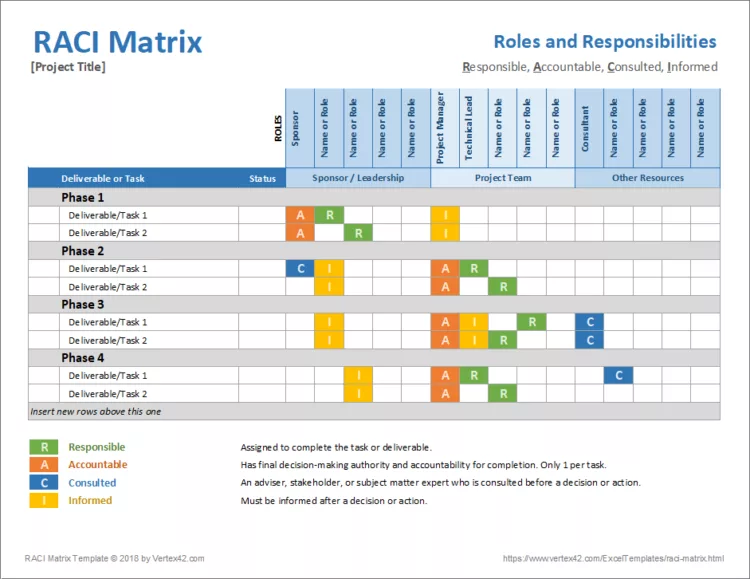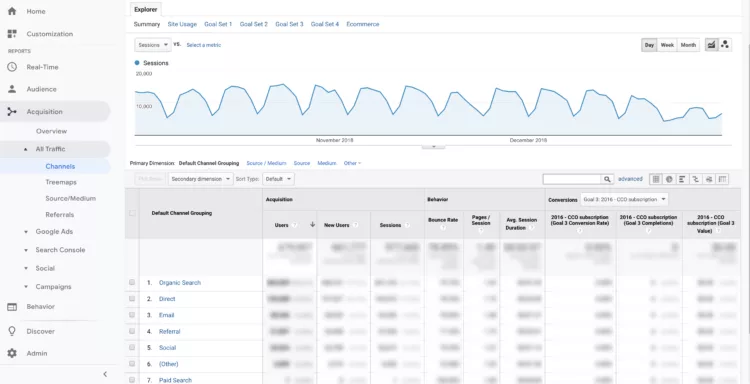Ultimate Launch Checklist for Your Future Website

Whether you need to build a website from scratch, redesign, or migrate it to another CMS (Content Managing System), launching a website can be an exciting activity or turn into innumerable problems. If you want your site to get off to a successful start, first run through the checklist and make sure you consider all the right things.
Ultimate Website Launch Checklist
1. Draw a list of intermediate tasks and team members
2. Get ready for the worst-case scenario
3. Set website launch date
4. Prepare a staging site
5. Backup solution
6. Update your CMS
7. Approve testing procedures
8. Make a list of future post-launch improvements
9. Make a list of interested parties’ contacts
10. Test start
11. Ensure your site is secure and has an SSL certificate
12. HTTPS traffic
13. Ensure your XML sitemap is properly configured on the server
14. Own Traffic Exclusion
15. Analytics Solution
16. Make sure all your site pages are available
17. Check your website content
18. Run stress testing
19. Run legal content review
20. Check site accessibility
21. Review all the changes before the launch
22. Create social media profiles for your website

Extensive Checklist for Launching a Website
1. Intermediate Tasks and Team Members
Make your own list of tasks that need to be completed for the launch. What content do you need to fill your website with? What CTAs (calls to action) need to be created? A detailed list of all the activities that need to be done before your website launches, with prescribed deadlines for each task, will greatly simplify your workflow.
After that, distribute all the tasks among the teams and their members. Usually, when it comes to a website launch, a large team is involved: copywriters work on content, designers choose images and take care of the aesthetic side of site perception, a team of tech specialists deals with backend development. To make sure that all participants of the project are on the same wavelength and there's no confusion in the distribution of functions, you should create a comprehensive chart of each team's and individual specialist's areas of responsibility.
A responsibility assignment matrix (RACI matrix) is perfect for creating a scheme like that.

Whether it's a team of 5 people or a collaboration of several companies, everyone needs to understand their role: the tasks and actions that need to be performed. One way to determine the role of each team member is to use the RACI matrix. A responsibility assignment chart, AKA RACI (Responsible, Accountable, Consulted, and Informed) matrix, describes the involvement of different roles in completing tasks, project, or business process deliverables. This powerful tool will help you determine which person is best assigned to perform a certain task, which employees or teams should be Consulted before final decisions are made, and who needs to be Informed of decisions or actions taken.
2. Worst Case Scenario
Interview everyone on your team to find out what they think might go wrong. After that, draw up a few backup plans to be prepared for any possible problems with the launch.
3. Launch Date
Once you know the approximate scope of work, you can set a launch date. Give yourself a month or two to work on it (at least). Most agencies make their research, design, and development plans 2-3 months in advance.
4. Staging Site
A staging site is a clone of your live website that sits on a private server and is used to prepare and reconcile content and code changes before uploading the main version online. These clones are ideal for playing around with various changes and updates - their appearance is virtually indistinguishable from the public version, and you don't have to worry about the website crashing.
You can synchronize all the content and templates between the staging site and the main version via CMS. Create an intermediate site environment, form a preview version with all the URLs to go through the different sections, and test the visual performance of your idea.
5. Backup Solution
In short, backups can be a lifesaver. You should have a fresh backup of your site that you can restore if the worst happens to your site. Think of a backup as a last resort. It doesn't prevent anything, but it becomes invaluable if something goes wrong.
There are many ways to backup your site. You can copy and download files manually, use a third-party service, or use web hosting. For peace of mind, we recommend using the latter as a default backup solution. That way, you don't have to worry about setting anything up, and if something goes wrong, you can restore your website in a few clicks. However, it's always good to have a third-party solution as an extra protection measure.
6. Update your CMS
Using a CMS can simplify your life in many ways. This type of software usually provides you with a wide range of tools to create, update, and manage your pages, even if you know nothing about web development.
However, as with other software, you need to update your CMS to keep it stable and provide you with the latest features. For a real-life example, see WordPress. This CMS rolls out updates frequently and includes new features every few months.

Source: wordpress.org
Before you launch your website, you want to double-check that you're using the latest version of your CMS and that it's working properly on your website. This virtually ensures that you won't encounter any unpleasant surprises on launch day and beyond.
Most CMSs will let you know when you need to update the software, so you don't have to worry about the latest versions. Even after your website launches, we recommend that you always update your CMS whenever a new version comes out, so keep an eye out for notifications.
7. Testing Procedures
Quite soon, you'll start testing your site to make sure all the elements and the system to track bugs and enhancements are working seamlessly. You can assign bug fixes and feedback triage to only one person. To make the feedback gathering process more streamlined, use Google Forms instead of traditional suggestion emails. Those who use project management systems like Basecamp can also try BugHerd or UserBack (as an alternative).
8. Post-Launch Improvements
The website you are launching should be functional, have a good design and good positioning. However, at the initial stage, most likely, it won't meet all your expectations. Nobody wants to build a website for months only to find out that users don't respond well to it. What if your customer won't like it? What if conversion rates drop sharply? All these things can lead to wasted money and effort, and you don't want that.
Thus, you want to put a decent version of the website online and make improvements to it afterward - stick to the growth-driven design approach. Create a document with a list of all the changes that can't be made before the launch that you plan to do in the future. Add new details to it as you study the interaction of users with the website. You can use tools like CrazyEgg, UserZoom, or Loop11 for this.
9. Interested Parties
Find out who's involved in launching the website, and make a list with contacts of all stakeholders, e.g. top engineers and tech executives.
10. Test Start
Freeze all content and code changes before you start testing. Here's what you'll need to test before the launch:
- Site speed. Site speed (i.e., the time it takes for each page to load), affects user experience, conversion rates, and even search engine rankings. To get a complete picture of your site's load speed, you can use Google PageSpeed Insights.
- Images. Make sure that all your website images are properly compressed - this greatly affects the loading speed. Some service providers automatically compress all images uploaded to the site through them. If you use a CRM without such a possibility, third-party services like TinyPNG can help you reduce the size of files. Also, make sure that all images are of equal size and quality. Add a short description to all the images to allow search engines to identify and index them.
- SEO content optimization. Ensure your title and description meta tags are correct for all pages on the site. Apart from optimizing the entire website content for search queries, also check a few key elements: title and description tags, HTML title and description tags, body, image titles, and descriptions, URLs. You can use Ahrefs step-by-step instructions.
- Mobile optimization. Google's algorithms make mobile-friendly sites a priority in search results. Adaptive website design noticeably increases leads, and companies using it have a tangible advantage over customers. This article from Google will help you learn more about how to optimize your website.
- Web forms. All web forms on your site should work perfectly. When a visitor fills out a form, will he/she receive a newsletter email in their inbox? Will they get on a Thank You page after they fill out the form? Does the site save each completed form in a database? Does analytics software capture each completion into conversion rates?
- Conversion paths for key buyer personas. Before you worked on the design, you needed to draw a portrait of the various buyer personas and think of a navigation route through the site that will allow them to find the information they need. We recommend you start at the top of the sales funnel and gradually move downwards. Before the launch, test the quality of different conversion paths for different buyer personas.
- Links. Website redirects, i.e. how a website redirects users to the pages they want, is an extremely important metric, especially when redesigning. Services such as SEO Spider from ScreamingFrog can help you with this. You also need to create a custom Error 404 page that users will see when a redirect fails. Check out a few examples of fun and unusual error pages here.
- Grammar (grammatical errors, punctuation, and typos). Don't forget to check the places where filler text was placed (that you had to replace with a block of actual text later).
- Uniformity of formatting. Sometimes, font codes on the page change at random, so you'll need to check all pages of the site for random bold text highlights or font changes in the middle of a text block.
- Site navigation and internal links. Another aspect that can make a website look unfinished is the presence of broken links. A broken external link or two is fine, but if you encounter a faulty navigation menu, it can be a deal-breaker.
However, if the number of pages on your site is small, manually checking every link can be incredibly time-consuming. Fortunately, there are many online tools that make link checking a no-brainer. Dead Link Checker is one of them. Let the tool do its job and fix any broken links in your content. This should only take a few minutes.
11. Security and SSL Certificate
An SSL certificate will encrypt your site's data and protect it from possible attacks. Not only will it keep visitors safe but it will also speed up site promotion - Google will appreciate it for sure.
Secure Sockets Layer (SSL) certificates authenticate your website and allow you to use HTTPS to transmit data securely. This is especially important for eCommerce websites. However, there's literally no excuse for skipping this step, regardless of your niche, especially since you can generate an SSL certificate for free.

If your site is secure and has a certificate, then move it to a new server. If not, you need to get, configure, and install the certificate. It can take a few days to get the process up and running, so it's best to get this done well in advance of launching.
12. HTTPS traffic
Once your SSL certificate is installed, you can redirect all of your website traffic using the HyperText Transfer Protocol (HTTPS). By doing so, you ensure that all data going back and forth from your site is secure. In addition, most browsers will show whether your site supports HTTPS.
If you don't configure your website for HTTPS, your visitors will get a warning when they try to access it, which is really bad for business and traffic levels. To avoid this, we recommend following Google’s Recommendations for enabling HTTPS.
13. XML Sitemap
An XML sitemap is a document that resides on your server and contains information about all the links embedded in the site structure. That point is critical for search engine optimization because it allows web crawlers to more accurately determine the structure of the site and examine it more effectively.
14. Own Traffic Exclusion
For more accurate website performance analytics, you need to exclude your own traffic from the statistics. This is due to the fact that if the system captures every visit from your employee, your customer won't be able to see an objective picture. You can find out your IP in Google, actually.
You need to create a special filter to exclude your own traffic - use Google Analytics for this.
15. Analytics Solution
Site analytics provides you with information about your site visitors. This includes traffic, behaviour, demographics, etc. Without analytics, you're basically "flying blind." You may know if your site is getting traffic but you won't get any insight into what your visitors are doing or where they are coming from.
For example, look at your site's bounce rate analytics. If the rate you see is getting too high, you should know that there's a problem with your site's UX or performance, and take action before things get worse.
There are many analytics platforms to choose from, but we're big fans of Google Analytics. Not only is it free but it offers a lot of data to consider. Integrating Google Analytics into your site is very easy, so we recommend doing it right from the start.

Source: contentmarketinginstitute.com
However, it's worth noting that new sites often don't get much traffic. This means that it may take some time for your analytics tool to start collecting any valuable information. Nevertheless, it's best to start at the beginning, so you don't have to hurry later.
16. All Pages Available
When you visit a website with unfinished pages, visitors are likely to think it's abandoned or incomplete. This can affect user confidence and your level of professionalism.
A common problem with creating websites is that we often think too ambitiously at first. Instead of thinking about the basic pages your site needs at launch, you end up considering dozens of options to implement a perfect one in your head. Ambitions are great but they can (and often do) delay your site launch.
We recommend going back to the drawing board and outline which pages are critical to the functionality of your site. Stick to them for launch and ensure they're all ready for the public. Once your website is live, you can start thinking about expanding it.
17. Content Check
Let's stick to the basics. No one wants to visit a website full of typos or an automatically built copy. Before your site becomes public, you need to go through it with a fine-tooth comb and make sure you consider the following aspects:
- Grammatical and spelling errors;
- Inconsistencies with your copy;
- Redundant content.
If you need help, you can use online grammar checker tools (e.g. Grammarly or ProWritingAid) to help you weed out common errors.
However, even the best grammar checker tools can't make up for bad writing. If you think your copy is weak, take your time to rewrite what's needed before running it. There are some great content creation tools to improve your writing. Check your content for correctness and readability. Otherwise, your site will look unprofessional.
After creating the perfect copy, make sure it is not being compromised. Sign up for a content change monitoring service to be alerted of any unauthorized content changes.
18. Legal Content Review
To avoid problems with copyright, trademark infringement, etc. you should use legal help. This will also be helpful in creating a Privacy Policy. Additionally, you will have to inform the expert what information you use and how you collect it.
19. Stress Testing
If you are redesigning your site, a stress test is not a necessary procedure, as a surge of traffic may not lead to a critical overload of your server capacity. However, stress testing is a necessity if you expect many visitors at certain times, e.g. during holidays or a major press conference. By simulating the simultaneous arrival of tens of thousands of visitors from all over the world to your site, the test will help you understand how much one-time traffic your site will be able to handle.
Stress testing is a simulation and it cannot be considered a perfect replica of a real-life situation. Since the closer the testing is to a potential scenario, the better, you might want to ask your developer for advice on stress testing.
Many developers use Apache's JMeter but it's a fairly complex tool that's not always suitable for beginners.
Be sure to alert your hosting company or provider before stress testing. If you don't, your testing may be perceived as a DDOS attack. With many ISPs, unauthorized stress testing is considered a breach of their terms of service.
The website experience is one of the key aspects by which customers evaluate your company. Thus, pre-testing will at least help you ensure that people will not turn away from your product solely because of website design.
20. Site Accessibility
A user-friendly website isn't just about style or content - it should also offer a great user experience (UX). That means making it easy to interact with, read, and navigate. We've already covered some of these steps in previous paragraphs. However, there are a few more accessibility recommendations you want to follow, including:
- Ensure that users can navigate the site via keyboard;
- Add alternate text to your images;
- Use headers properly;
- Make sure your forms work.
All of the above tweaks will make your site more accessible and convenient to 100% of your visitors. That means people with disabilities will be able to fully enjoy it and get the best all-around experience, too.
21. Review All the Changes
When launch day is approaching fast, repeat all the little tests described before. Spend at least an hour carefully going through all the sections of the site. We bet you will be surprised by the number of bugs and errors that you'll notice at the last minute.
22. Social Media Profiles
Most successful websites are also active on social media. In other words, they have active profiles that frequently post new content, interact with followers, and generate some hype.
The best time to start building your site's social media presence is from day one. Before you start, however, you might want to figure out which platforms are best for your content. A restaurant may not need a Twitter account, but an Instagram presence is definitely a good idea.
Conclusions
When the launch day comes, the entire team should live up to the "all hands-on deck" principle. Be prepared to fix any potential mistakes as quickly as possible. When everything is ready, spread the word about the launch of your website via email, social media, and your own blog. Don't forget to upload an XML map of your site to all major search engines. Good luck with your site launch!
Dmytro Sokhach is an entrepreneur and the 6-Figure Flipper Club member. Founded Admix Global (web agency) that builds websites, makes them profitable, and sells them as business.
9 tips to maintain customer satisfaction post-pandemic
Related articles:
